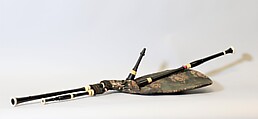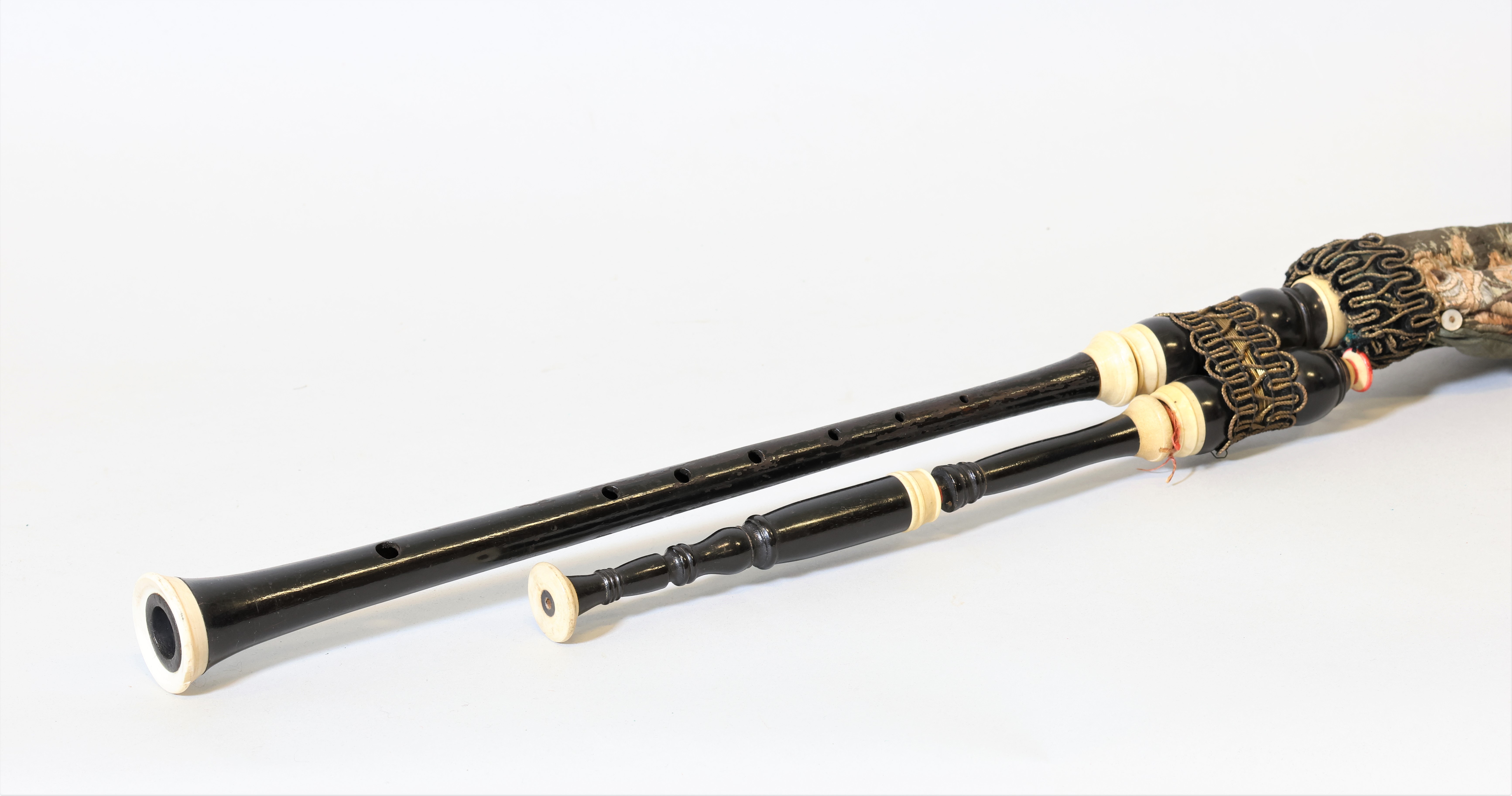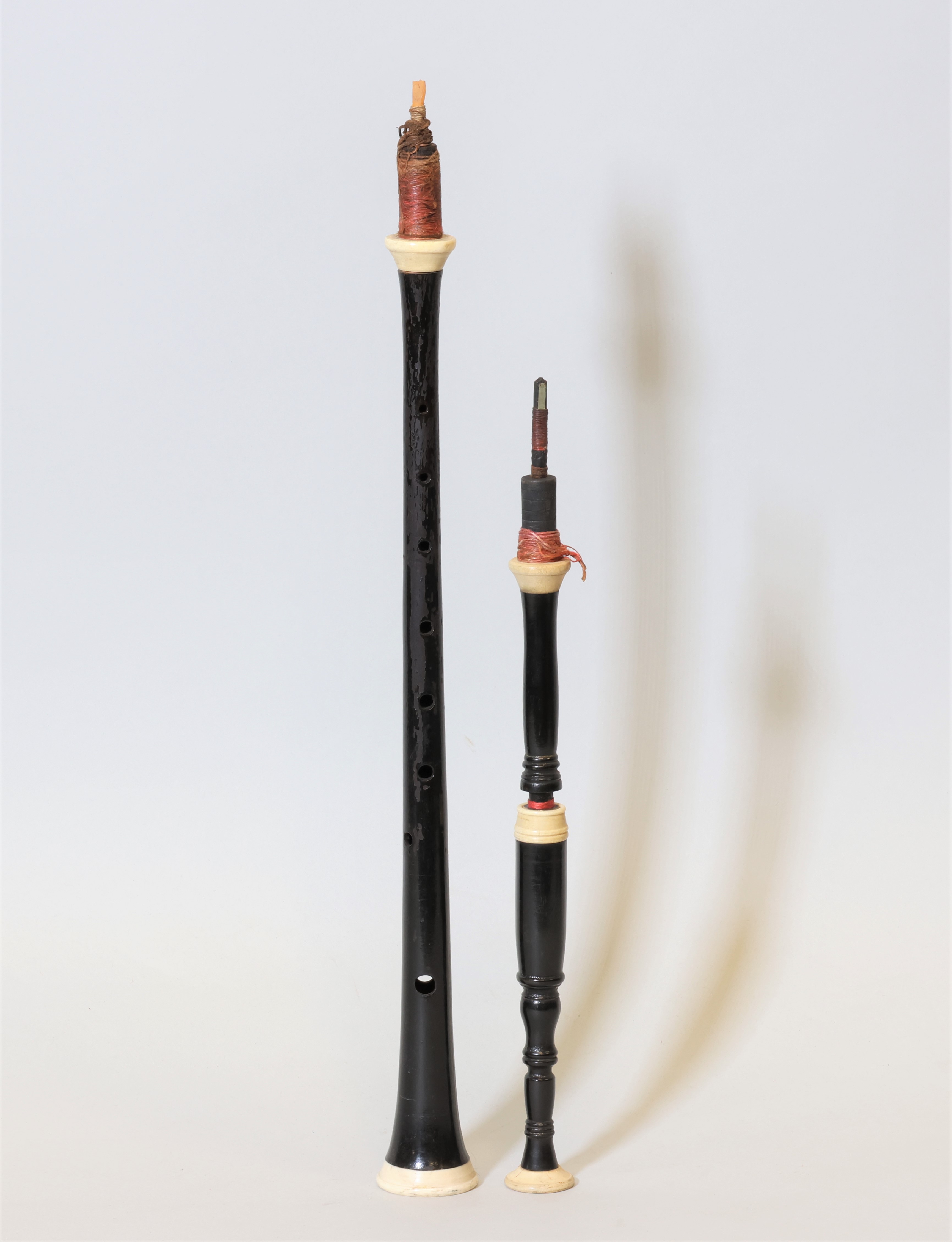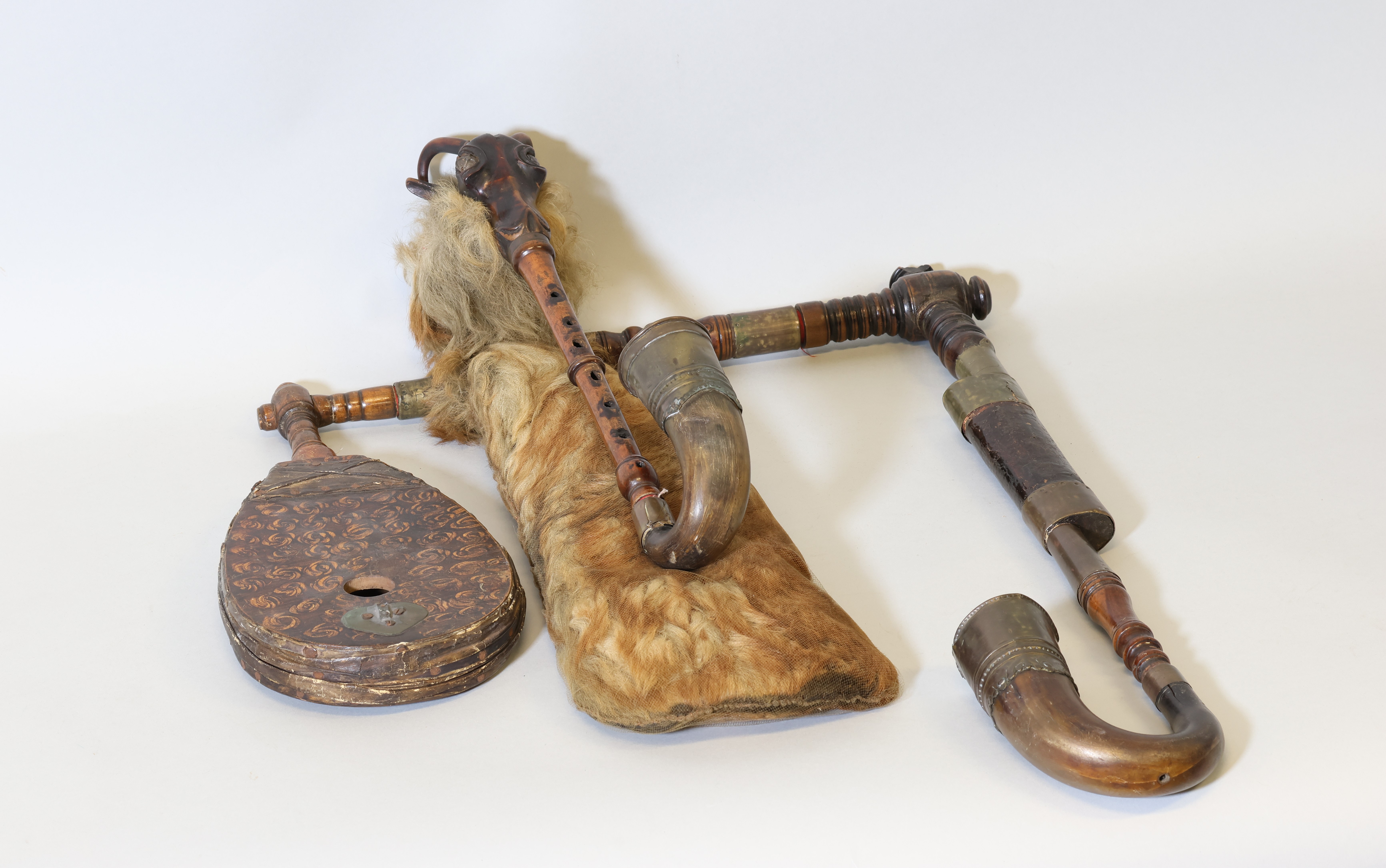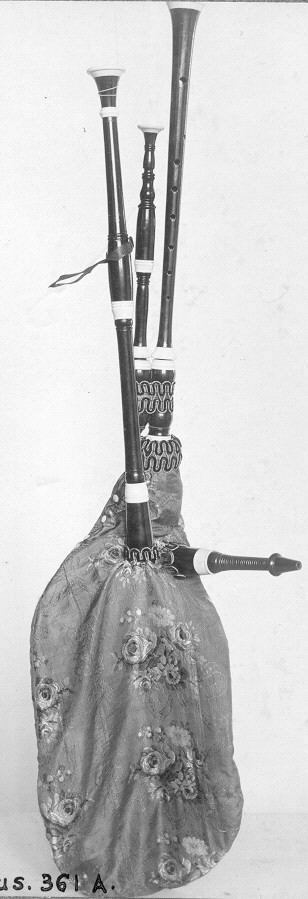Cabrette
Jean-Baptiste Pajot French
Late 19th century
Not on view
This cabrette was made Pajot-Fils, a workshop in Jenzat, France. The small town was an important center for hurdy gurdy and bagpipe making throughout the nineteenth century (Chassaing 1982:112). This bagpipe is stamped PAJOT FILS/Aie Mon PAJOT JENZAT (Ancienne Maison Pajot Jenzat, or old workshop Pajot from Jenzat), identifying it as from the workshop inherited by Jean-Baptiste Pajot (1863-1935). The large family, and other claims the same name, led Jean-Baptiste Pajot to brand all instruments from his workshop with this lineage (Chassaing 1987:20), thus establishing his legitimacy within a highly competitive sector. There was no ‘style’ for the workshop; it operated on a catalogue basis, and made instruments to order, based on the requirements of the client (Chassaing 1982:101).
This bagpipe is a mouthblown cabrette with a bass drone. The chanter and tenor drone are inserted into rounded stocks characteristic of this instrument. They are joined internally and are decorated with a black and gold weave. The tenor drone has a narrow bore, as typically found on cabrettes. This drone is reeded with a single reed but would often be muted. The bag is covered with a green silk cover embroidered with flowers in pink hues.
The cabrette was an instrument developed in Paris in the late eighteenth, and early nineteenth centuries. It was played by the diasporic community from the Auvergne region and became the eponymous instrument of the ‘bal musette’, named after the generic name of the bagpipe, ‘musette’. This instrument was probably made at the turn of the twentieth century, according to the observations of Bernard Blanc, a Parisian bagpipe maker (Blanc 1987).
(Cassandre Balosso-Bardin, 2023)
Technical Description
Conical single chanter of darkened finished wood 450 mm, 7/1 holes, 2 ventholes, cane double reed on iron (?) staple;
unbored bass drone pipe in 2 sections 508 mm;
tenor drone in 2 sections 300 mm, cylindrical bore, single reed of dark weed, brass (?) tongue;
blowpipe of dark wood 158 mm, leather flapper valve; sheep or cowhide bag covered with embroidered green silk with gold and black braid around base of stocks;
2 cylindrical stocks and 1 double cylindrical stock, all of dark wood mounted with ivory;
chanter and drones mounted with composition material; drones with unmatched grooved decoration, blowpipe also grooved;
tip of tenor drone barrel stock painted with red circles;
blowpipe and sounding pipes not of same wood as stocks, and may be later additions.
References
Bernard Blanc, 1987. Notes in instrument file #89.4.856, September 24, 1987. Musical Instrument Department Archive, New York: Metropolitan Museum of Art.
Chassaing, Jean-François, 1982. La tradition de cornemuse en Basse-Auvergne et sud-Bourbonnais. Moulins: Ipomée.
Chassaing, Jean-François,1987. La vielle et les luthiers de Jenzat. Combronde : Aux Amoureux de Science.
Due to rights restrictions, this image cannot be enlarged, viewed at full screen, or downloaded.
This artwork is meant to be viewed from right to left. Scroll left to view more.
